My first reaction to seeing the axe next to the bread was 'Waste not, want not.' My uncle never wastes food. "This makes good breadcrumbs, doesn't it?" I joked with him.
"If you'd been alive during the war, you'd be thankful for having something to eat," my visiting aunt replied. "There was never enough food in those days and you ate whatever you could get." I've heard this all before, from my grandmother, my late mother, her brother, and now her sister. "During the κατοχή^, when we didn't have any wheat, we'd grind the dry carob pods, which were used as animal feed, and make that into flour."
Carob tree - χαρούπι; carob pods - χαρούπια
Although she now finds herself in a village, it is not 'the' village. She is now in the village that her family moved down to once the family property was sold up in the mountain village of her birth; the latter is the χωριό she and her brothers still refer to as 'the' village. Few permanent residents remain in the village now, even though roads have been built, everyone owns cars and there is at least one general store that sells mass-produced storable foodstuff; even a gypsy truck passes by selling furniture, clothes and electrical goods!* People are now used to living with modern commodities; the old make-and-do lifestyle is out of place in the modern world, even when that world is an old-fashioned one.
She offers me some grapes from the shady vine crawling above us. "They may look scrawny and dusty, but they're very, very tasty," she says, trying to tempt me. Because she lives in Athens, she takes every chance she can get to eat seasonal local food whenever she is here: "you never know when you're going to find it again", she keeps reminding me.
Then she sighs. "It was never like this."
"You mean the grapes tasted better in the past, theia?" Whenever I talk to my mother's brothers and sisters, they always remind me of how different the food tasted in the past. They often blame the air for the difference in taste: ο αέρας άλλαξε.
"No!" she laughed ironically. "I mean, it was never so easy to have so much food to eat. We certainly didn't have it growing above our heads in the village like we do now. There was no such thing as leftovers," she said, pointing to a bowl of salad swimming in olive oil, where the dry bread was being thrown into. "Even the chickens are well fed these days!"
Σακούλι (sakouli) - a typical Cretan village bag; the material is woven by hand on a loom; it would have been used for foraging wild greens, snails, etc (it was made by my mother, but she never used it; these traditional hand-made woven fabrics are now worth a fortune).
"Every day, we'd all get up early, take our σακούλι, put it on our back, and off we'd go and fill it up. We all had our own foraging duties: one of us would pick horta, another would pick snails, another would look for firewood, another for figs..." Her voice trails off. "Do your children eat figs?"
Late autumn figs: in the Cretan kitchen, figs are always peeled before being eaten. These were found by the roadside. Figs are a popular summer forager's fruit; most Cretans living away from the main urban areas still have access to fresh seasonal figs.
These days, nearly all people, not just children, are picky when they have the opportunity to be. There are very few people these days that will be happy to eat anything placed before them.
Local variety of pear - in Crete, pears are called 'apithia' (απίδια)
As she spoke, her face lit up. "Those figs were like manna to us." She wasn't looking directly at me now. She seemed to be conjuring up a picture in her mind of those old times. "Whenever I ate those figs, I would think of the people in Egypt who had nothing to eat, but God gave them manna and they survived." She spoke as though she was remembering the taste of a dry fig as she ate it by the fireplace in the one room that all the family members shared (the other room of the family home was a stable) in the snowed-in remote mountain village, with probably only a Bible, η Αγία Γραφή, as reading matter.
"That was our manna, our winter fruit, and that was also what we served with tsikoudia when someone passed by and visited us. But tell your children to eat a dry fig nowadays, even one you've bought from the shops which sell them all in pretty packaging, and will they eat it?" She shakes her head. "They'll ask you for a πάστα from the zaharoplasteio instead, won't they?" This is something quite difficult for all of us to conceive. In those days, no one could imagine the ease with which the average Greek would walk into a zaharoplasteio and buy some sweets to have on hand for a chance visit from a friend. Old-fashioned treats like dry figs are now either a thing of the past, associated with old-fashioned people, or novel ideas for use in trendy upmarket recipes found on the internet, perhaps in combination with outlandishly expensive cheeses.
Living in a world of plenty: there's a zaharoplasteio (and a souvlatzidiko) in practically every neighbourhood or village.
"In September, with the πρωτοβρόχια (the first rains) came our first autumn vegetables, mushrooms and asparagus; if there was a hunter in your family, your meat was λαγός (hare) and συκοφάγες (fig-eaters - birds), and..." she pauses for a moment, "there was also tzerevelo." Now she turned to me. "What would kids today think of munching on tzerevelo instead of chocolate?" she asked. "They don't want to eat what we used to eat, do they?" she moaned. "Give them some meatballs, fried potatoes, rice, pasta and a glass of γαζόζα (soft drink) to wash it all down with, and they're quite happy to eat like this every day!"
What on earth is tzerevelo? I've been in Crete for nearly two decades, and have never heard of it before.
"Tze-RE-ve-lo," she explained, "it's a kind of..." She was now searching for a way to describe to me something that she herself had probably almost forgotten and/or had last eaten 50 years ago^^. "Well, it's a kind of nut... it grows in bunches... on the dramithia tree..., like grapes... it's blue when it's ready to eat..." She gave up trying to explain what it looked like. "It comes in the same seasons as figs and grapes."
"Where can we see these trees now?" I asked her.
"In the village."
"But we don't go to the village now!" I felt that the concept of tzerevelo was now out of my grasp, since I do not visit the village any more. It's frustrating to think that something that was once considered common, almost vital, is no longer within your reach simply because you were born a few years too late.
"They only grow in mountainous areas, like in the village." My uncle had now joined the conversation.
"Oh..." I replied with a forlorn sound to my voice. I hadn't been to my mother's village since just before I got married.
Δραμιθιά - τζερέβελo; Pistacia terebinthus
"But there's one in the olive grove here," he continued. "Don't know how it grew there, since you only see these trees in the highlands. A bird must have dropped a seed or pooped one." Let's just say I was thrilled; my thanks go out to that bird who left some of its luggage down here.
After bundling my uncle into the car (no favour is too great - I am his closest next-of-kin on the island), I drove him out to the field, a few minutes away from the house. When my grandparents left the village and moved to lower ground, they bought a plot of land to build a house on, and another parcel of land which was originally covered in grapevines, which they eventually converted into an olive grove. Bordering the olive trees on the side of the road, a tall tree was growing, with some unusual pink beads on some of its branches.
"This isn't a good dramithia**," my uncle tells me. "The bunches of the fruit aren't very thick and it looks kind of dry. Look at the leaves," he said, pointing to some of the lower branches. "They're mottled." He explained to me that this was also the case concerning the village dramithies. Just like all crops, some fruit species are not so tasty, thus being avoided as food sources. They were either cross-bred or left to their own devices, so that only the better ones survive. The origin of this particular dramithia would probably have had a worse fate if it hadn't been for that bird, and the fact that my uncle is sentimental about 'old' food..
I chopped off a branch of pink beads. "Watch it," my uncle warned me. "You'll get covered in glue." Sure enough, as soon as I snapped off the branch, a very sticky sap began to seep out of the stem. Although it does not irritate the skin, it spreads easily; in no time at all, both my hands felt like they were covered in honey. It was very difficult to keep the camera clean!
Before we left, I took in the view from the olive grove, which is located on a hilly spot in the village. The blue sea was just visible. The fate of this field is sealed; it will one day become a house with a garden, gazebo and swimming pool.
Imagine a house located here - it would have a balcony, so the view of the sea would be more visible (as long as your neighbour across the road doesn't decide to build on his land too).
When we came back home, I showed my aunt the branch that I had cut.
"You'll need to wash your hands, won't you?" she laughed. She then told me that she remembered about the sticky sap just as we had left to visit the field. She explained to me how the berries were once prepared: The berries start off their life as pink beads, which turn blue when they are ripe and ready for picking. When they were harvested (this no longer happens), something children usually did, they were placed in a bowl of water. The berries that floated were thrown away (they were hollow) and the berries that remained were drained and either eaten fresh, or salted and dried in the sun for keeping. Their taste is similar to pistachio, which they are related to. Tzerevelo was served to guests along with the dried figs, with a nip of tsikoudia. It makes a crunch sound when you bite into them. Bits of the berries will stay stuck in your teeth; they aren't exactly the most enticing nut! In those days, peanuts and pistachio were not easily available to Cretan mountain dwellers who didn't venture often into the town. This was something that kept well in their cool stone houses, which they could use to treat a guest.
The tree that tzerevelo grows on is called the dramithia. Dramithies still line mountain roads in Crete. The next day after learning about this tree and its fruit, I visited a friend who lives in a mountain village and was surprised to see so many dramithies as we drove up the sloping road.
"Nobody eats them these days," my aunt spoke wistfully, her voice taking on a regretful tone. "Now people want to eat fast and easy food... έχουν φάει οι άνθρωποι, και δε πεινάνε πια... and that's why they don't eat these foods any more, their stomachs are full, and they don't even need to remember them. But it wasn't always like that...
"I'll never forget Elpida's daughter, Stavroula," she continued. "While her mother was giving birth to her younger brother, Stavroula wandered into the stables. No one was watching over her because everyone was looking after the mother and her new baby. Stavroula found some dry κουκιά (broad beans) and started eating them. All that dry food must have made her thirsty, so she began drinking a lot of water. Some people said she died because she ate all that dry food, and then drank a lot of water which made her stomach swell. Other people say she died because she had an enzyme deficiency. I'd just say she died of hunger, because if she had had something better to eat, then she wouldn't have been tempted to eat animal feed." Sometimes, the truth is harder to believe than fiction.
The tzerevelo nut, once a vital part of any visit to a mountain dweller's house, is now left for the migrating birds to eat as they make their way south in the autumn to escape the cold climates of the north; gone from our plates, and practically forgotten. If my aunt hadn't mentioned it in passing, I would never have discovered it myself.
^ κατοχή (katohi) 'occupation' - what most old people call the occupation of Greece during WW2
^^ I'm basing this on my husband's age - he had heard of tzerevelo fromhis father, but had no idea what it was; the urban drift in Crete began to take place at about this time.
*At this point in my visit, a hippie-clad foreign resident of the village walked by, holding a dog leash with a poodle trotting along at its end, followed by a gypsy truck selling pottery urns in the same styles and shapes that we are familiar with from Knossos.)
**The tree is called dramithia, plural dramithies, while the fruit is the tzerevelo, plural tzerevela.
©All Rights Reserved/Organically cooked. No part of this blog may be reproduced and/or copied by any means without prior consent from Maria Verivaki.
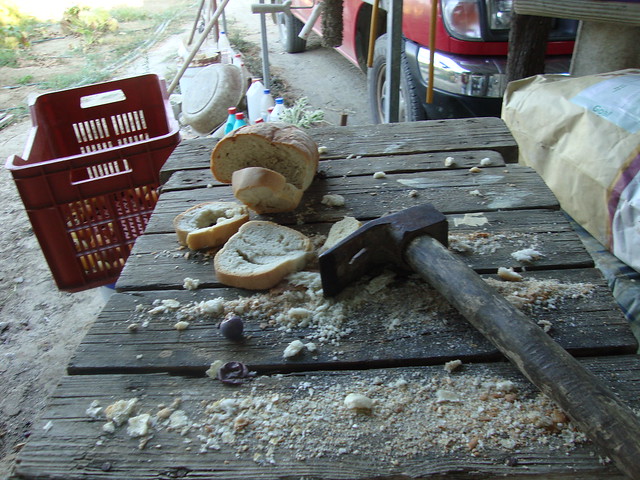
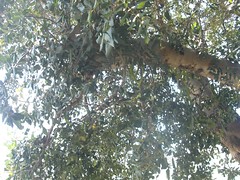
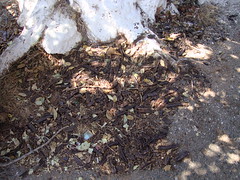
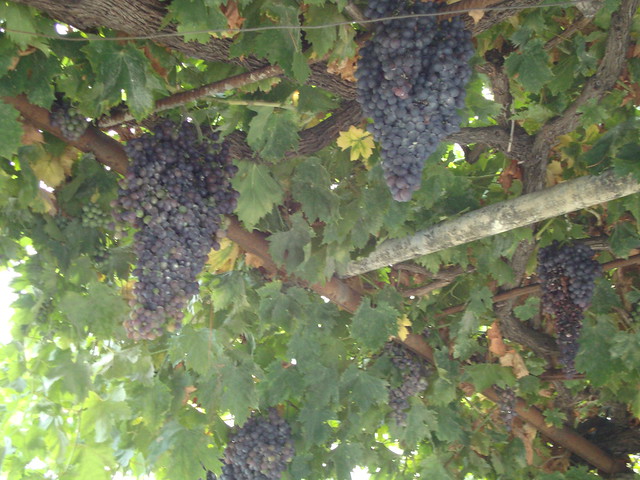
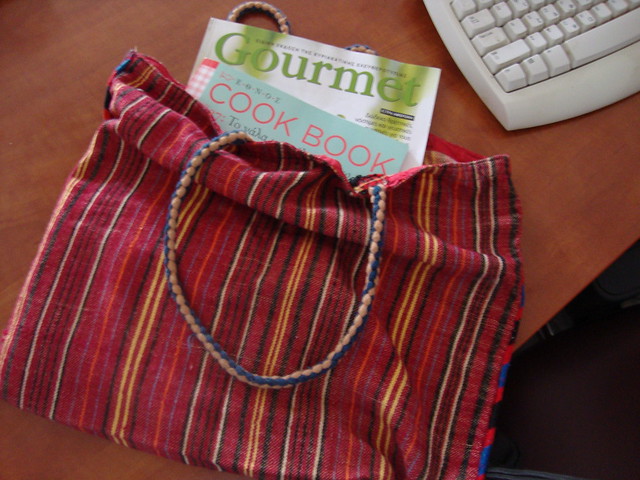
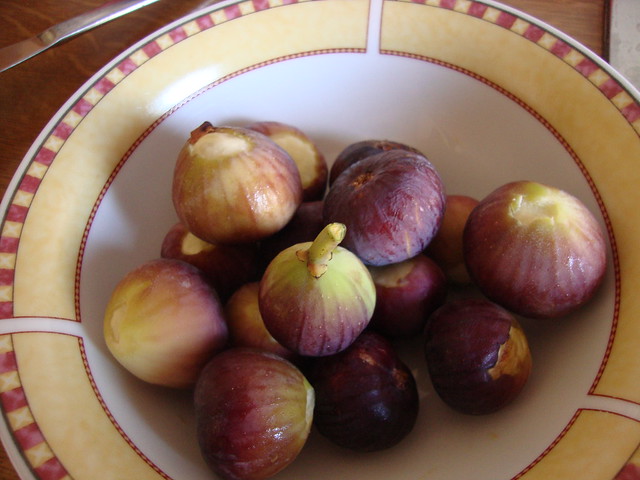

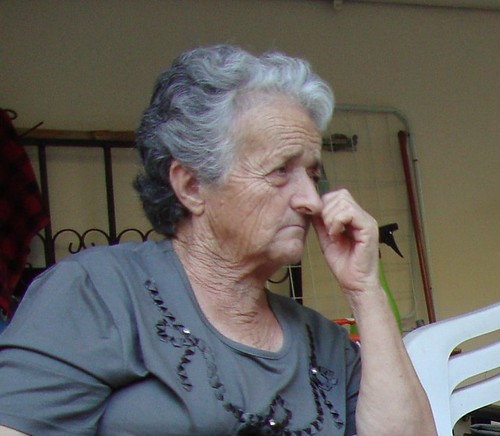


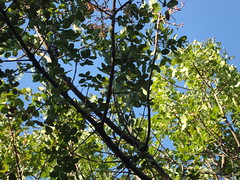
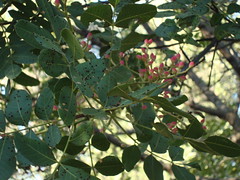
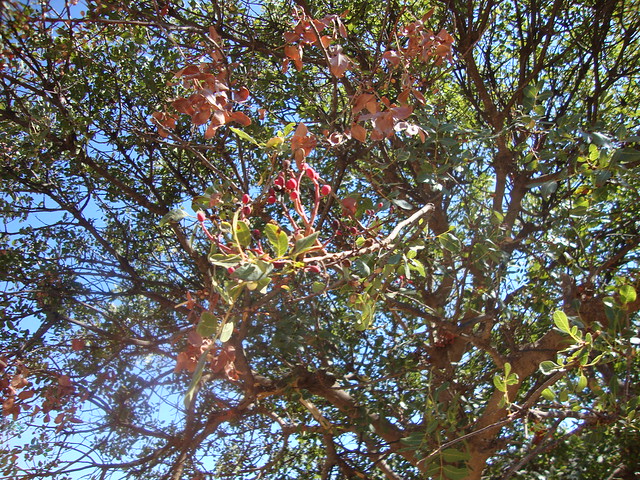
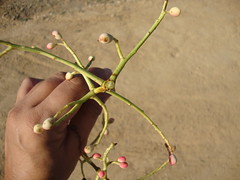
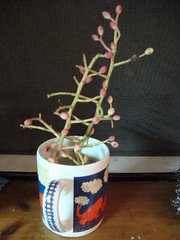
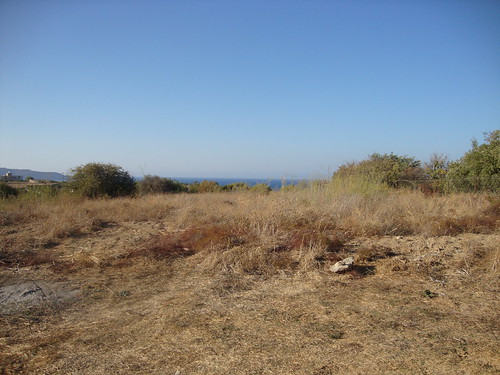
We really don't realize how lucky we are to have the leisure to refuse to eat certain foods if we want.My own parents always talk about gaving to give up their ratuon cards when they left England to move to Canada in 1957, long after the war.
ReplyDeleteThat was a fascinating post. Thanks for gathering all these stories about the life of villagers in the past.
ReplyDeleteI really enjoyed the story! Thanks for introducing us to this nut - with sticky branches, how curious!
ReplyDeleteAlso, I sighed like ten times upon seeing the fig photo (they don't grow here where I live but I adore them and if I get to eat a couple of them per year, I'm all happy!).
And that bag of yours looks too pretty!!
Όντως οι άνθρωποι που πέρασαν κατοχή εκτιμούν το φαγητό περισσότερο, (και κατά τη γνώμη μου τρώνε κρέας πολύ περισσότερο επειδή το στερήθηκαν)... Καλό σκ Μαρία!
ReplyDeleteIn the frenzy of packing and cleaning and travelling, I'm not sure I told you how much I liked this. Educational and a great story (I like the illustrations too!). I think Mariana wrote about this plant in the last couple years, I'll see if I can find it. I love discovering edibles that have fallen out of fashion.
ReplyDeleteGreat post Maria I loved reading it all! We also have these trees in Kalymnos and we call its "fruit" (that is green when picked to eat) dramithia as well. They have a very peculiar taste--one that I don't even think I can put into words.
ReplyDelete